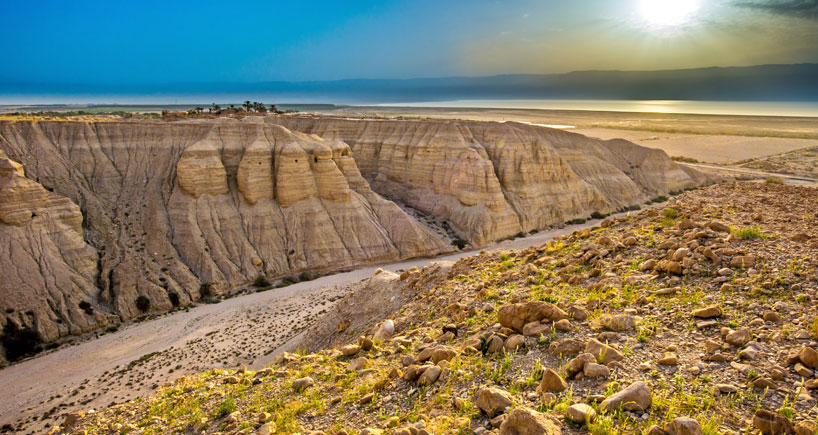Located near the northwestern shore of the Dead Sea and the Judean Desert, Qumran National Park is best known as the location where the Dead Sea Scrolls were found in 11 nearby caves over 70 years ago.
Established during the Hellenistic period between 134-104 BC, Qumran has been populated at various times in antiquity, most notably by the Essenes, a Jewish sect isolated from the trappings of city life.
In 1947, two Bedouin shepherds discovered a clay jar containing seven scrolls in a cave about a mile from Qumran. After changing hands several times, the scrolls reached the hands of scholars who could accurately evaluate the age and value of the parchments.
Over the next decade, local Bedouin and scientific researchers would discover the remains of more than 900 manuscripts in 11 caves. Each cave is located near Qumran, the farthest cave just over one mile north of the site.
In February 2017, a newly discovered 12th cave contained a blank scroll along with the remains of jars, cloth, and a leather strap. Researchers believe these items were used to bind, wrap, and hold the scrolls. The scrolls found include the oldest known existing copies of Genesis, Exodus, Isaiah, Kings and Deuteronomy, among other scripture considered Divinely inspired from the Hebrew Bible. They also include calendars, hymns, psalms, community rules, and works that may be questionably Divinely inspired.
Another mysterious scroll, discovered in 1952, differs from its predecessors—the Hebrew was inscribed into a thin sheet of copper, and seems to suggest the locations of caches of gold and silver. Some researchers surmise that the inscriptions pinpoint locations around Qumran where these caches—possibly containing holy objects hidden after the destruction of the Second Temple—could be found.
Currently housed in the Shrine of the Book at the Israel Museum in Jerusalem, the scrolls are stored at optimal temperature and humidity to ensure preservation. The copper scroll is on display at the Amman Museum in Jordan.
Visitors to Qumran can access the park year-round, but the ideal time to go is prior to the hot summer months (June-September). Tours typically take one to two hours, are wheelchair accessible, and capture everyone’s attention, making this a much sought-after site of significance.















